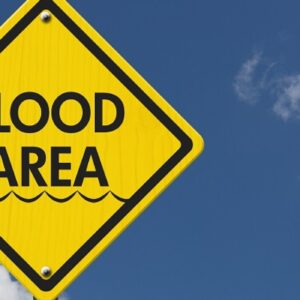🏠 Introduction
Imagine waking up after a storm, surveying ruined walls and soaked belongings—only to find out your insurance won’t cover the damage. Vague clauses, surprise deductibles, and exclusions can render your policy nearly worthless right when you need it most. In this post, we’ll expose the hidden loopholes that risk turning policyholders into public statistics. We’ll also compare key scenarios, explore real-life stories, interpret the implications, and share insights to help you take control.
Why These Loopholes Exist
Insurance companies design policies to balance risk, protect profitability, and meet regulatory obligations. To prevent catastrophic exposure and whale-like payouts, they insert exclusions, carve-outs, and special deductibles. Unfortunately, these often hide deep in fine print where most homeowners never look—until it’s too late.
By knowing these gaps, you can make informed choices when purchasing, renewing, or updating your policy.
Common Loopholes That Can Leave You Homeless
1. Separate “Catastrophe” Deductibles
- What it is: Standard policies may carry a hurricane, windstorm, or earthquake deductible representing 3–5% of home value—far beyond the usual fixed $500–$1,000.
- Why it matters: After Hurricane Helene, homeowners were stunned by deductible demands of $30–$50k on homes worth $1M.
- What to do: Check your declarations page for separate “hurricane,” “windstorm,” or “earthquake” deductibles.
2. Anti-Concurrent Causation Clause
- What it is: If two events—one covered and one not—occur simultaneously, your entire claim gets denied.
- Case in point: After Katrina, homeowners with wind and flood damage saw total denials due to this clause.
- Implication: Even covered events like windstorms can be disqualified if flood wasn’t insured.
- Tip: Secure flood insurance if in a flood-prone area!
3. Exclusions for Flood, Earthquake, Mudslide, Sewer Backup, Wear & Tear
- Standard exclusions:
- Flood, earthquake, landslide, mold, sewer backup, mold from unknown leaks, pest damage, and gradual wear4–7.
- Loophole alert: Internal flooding (burst pipes) is often covered, but external flooding (storms, surge) is not .
- Vital step: Purchase endorsements or separate policies for flood, earthquake, sewer backups, etc.
4. Coverage Caps & Sublimits
- Jewelry, artwork, firearms: Policies limit payouts to fixed amounts unless you add riders (aviva.ca).
- Basement water damage: Some policies carve out basements entirely.
- Tip: Inventory valuables carefully and purchase scheduled personal property riders.
5. Vacancy Clauses for Unoccupied Homes
- What it is: Homes left vacant beyond a set period (e.g. 30–60 days) may be entirely excluded.
- Impact: Vacation homes or rentals face cancellation or claim denial.
- Solution: Keep occupancy status current; consider vacancy insurance if needed.
6. Maintenance & Neglect Exclusion
- What it is: Damage due to poor upkeep—like a leaking roof, mold, rot, or pest infestation—is excluded (sharpinsurance.ca, aviva.ca).
- Real risk: Homeowners may be denied claims after storms for pre-existing deterioration.
- Advice: Keep maintenance logs and inspect annually.
7. Ordinance or Law Coverage Gaps
- What it is: If building codes require upgrades after damage, standard policies won’t pay for the extra cost.
- Impact: Rebuilds may become impossibly expensive.
- Mitigation: Add “ordinance or law” coverage for those extra costs.
8. Valuation & Replacement Limits
- Market vs. rebuild cost confusion: Many homeowners insure for purchase price—not rebuilding cost (wired.com, iii.org).
- Consequence: In underinsurance, payouts aren’t enough to rebuild.
- Recommendation: Use a qualified estimator to determine actual rebuild cost.
9. War / Terror / Nuclear Exclusions
- Exclusion coverage: Damage from war, terrorist events, and nuclear accidents is universally not insured (canada.ca, aviva.ca).
- Insight: In rare geopolitical incidents, your home might be excluded.
Table: Quick Comparison of Common Loopholes
| Loophole | Risk Trigger | Typical Exclusion | Owner’s Defense |
|---|---|---|---|
| Catastrophe Deductibles | Hurricanes, windstorms, quakes | 3–5% of dwelling value | Know all deductibles; compare carriers |
| Anti-Concurrent Causation | Wind + flood coinciding | Denial if any concurrent excluded peril | Get separate flood, sewer, earthquake policies |
| Flood/Quake/Mudslide | Climate disasters | Excluded by default | Endorsements, NFIP, private flood insurance |
| Sewer Backup | Backflow through pipes/drains | Standard exclusion | Add coverage or endorsement |
| Maintenance & Wear | Old roof, mold, pests | Exclusion of all gradual damage | Keep maintenance logs and contract repairs |
| Vacancy | Homes left empty >30–60 days | Total policy cancellation | Use vacancy insurance or adjust policy |
| Ordinance or Law | Code upgrades post-loss | Not included in standard rebuild cost | Add this specific rider |
| Valuation | Underinsuring by replacement cost | Pays less than rebuild | Use appraiser; consider inflation guard clauses |
| High-Value Items | Jewelry, artwork, firearms | Capped at low fixed limits | Schedule items with separate coverage |
| War/Terror/Nuclear | Acts of war or terrorism | Global exclusion | Specialized policies if needed |
Real-Life Horror Stories Post-Disaster
- Hurricane Helene (Oct 2024):
Following Cat-4 storm, deductibles of 3–5% triggered massive out-of-pocket costs—up to $50k on a $1M home (wsj.com, policygenius.com, cleveland19.com, wired.com, investopedia.com, sharpinsurance.ca, en.wikipedia.org, bankrate.com, en.wikipedia.org, en.wikipedia.org, library.nclc.org, aviva.ca). Only flood riders could save these homeowners. - Landslide in NC:
A self-employed couple lost their home and livelihood after a landslide triggered by Helene; their policy didn’t include landslide or earth movement coverage (businessinsider.com). With no rider, their insurance was void, necessitating GoFundMe campaigns. - Katrina Returns:
Anti-concurrent causation clauses prevented claims because even covered wind damage was considered tied to flooding (cleveland19.com). Peeling back layers of damage became a legal mess.
Implications Every Homeowner Should Consider
- Financial Vulnerability
Without full coverage, claims can bankrupt families or trigger mortgage-induced foreclosures (aka force-placed insurance) (investopedia.com). - Mortgages & Lenders
Lenders often impose costly force-placed insurance if they detect policy lapses—expensive, non-negotiable, and inadequate . - Legal & Public Adjusters
When insurers deny claims, homeowners can enlist public adjusters or take legal action—at high cost, emotional toll, and extended timelines (apnews.com). - Climate Change & Premium Pricing
Insurance carriers are reducing or pulling out of high-risk areas. In Florida or California, premiums have soared—and some homeowners have no coverage options (investopedia.com).
What You Can Do: Takeaway Insights
✅ 1. Read the Fine Print Thoroughly
- Check all deductibles, including for hurricanes and earthquake
- Uncover sublimits, riders, vacancy definitions, and anti-concurrent clauses
✅ 2. Buy the Right Add-Ons
- Endorsements for flood, earthquake, ordinance/law, sewer backup
- Scheduled coverage for jewelry, artwork, firearms
✅ 3. Insure for Replacement Value
- Use professional estimators
- Include inflation guard clauses to adjust building costs
✅ 4. Keep an Updated Maintenance Log
- Document roof replacements, plumbing updates, pest control, inspections
✅ 5. Shop Multiple Carriers
- Compare both base premiums and “catastrophe” deductibles (cleveland19.com, bankrate.com, aviva.ca)
- Consider bundling home and auto for discounts
✅ 6. Reassess Annually
- Changes in local building codes, home improvements, or risk profiles (like wildfire zones) require updates to your policy
✅ 7. Keep an Emergency Fund
- Maintain 6+ months of living expenses in case insurance fails
Conclusion: Protect What Matters Before It’s Too Late
Home insurance isn’t a “set and forget” asset—it’s a complex, risk-driven commitment. The real danger lies in hidden exclusions, surprise deductibles, and silent loopholes. By actively managing your coverage—updating riders, scheduling high-value items, and preparing for climate-driven changes—you can safeguard your home and prevent disaster from turning you homeless.
Take an hour this weekend: gather your declarations, highlight every potential coverage gap, call your agent, and secure peace of mind.
Further Reading
- Investopedia on Catastrophic Deductibles
- Policygenius for a deep dive into 13 common homeowners exclusions (policygenius.com)
- Business Insider humanizes the financial toll of uncovered landslides
By writing with clarity, credibility, and empathy, this blog post helps homeowners truly understand the risks—and empowers them to take action. Let me know if you’d like me to tailor it for a specific location or add localized data!



